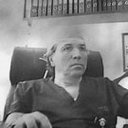[Cladophilaphora bantiana brain abscess treated with voriconazole in an immunocompetent patient].
キーワード
概要
Phaeohyphomycosis is a term used to define infections caused by darkly pigmented fungi with septate hyphae which contain melanin in their cell walls. Although fungi rarely cause central nervous system (CNS) infections, the incidence of CNS infections caused by melanin-containing fungi has been increasing in the recent years. Cladophialophora bantiana is the most frequently isolated species from cerebral phaeohyphomycosis. It mostly affects adult men in the second and third decade of life and about half of the cases occurs in immunocompetent patients. In this report, the isolation of C.bantiana from brain tissue of an immunocompetent patient who was operated with the initial diagnosis of a brain abscess, was presented. A 27 year-old male patient presenting without any chronic disease was admitted to the emergency department of our hospital with the complaints of persistent headache and diplopia. Magnetic resonance imaging (MRI) showed a space-occupying lesion in the right parietal lobe and left frontal lobe. Brain abscess was diagnosed in the patient who was referred to the neurosurgery department. Treatment was initiated with ceftriaxone and metronidazole. The abscess material sent for direct microscopic examination in the mycology laboratory was stained with Gram and Giemsa and cultured in the Sabouraud dextrose agar medium (SDA) with and without antibiotics (cycloheximide and chloramphenicol). Then, it was incubated at 37°C and 25°C. Direct examination and staining revealed a septate hyphae. The patient who received liposomal amphotericin B was referred to the infectious diseases department. Surface colors of all media including SDA with cycloheximide were olive-gray to black and contained velvety colonies. Lemon-like very long and integrated chains of conidium with poor branching in cornmeal Tween 80 agar, as well as growth at 42°C in passages, positive urease test result and cycloheximide resistance suggested C.bantiana. The isolate was confirmed as C. bantiana based on its DNA sequence analysis. Minimum inhibitor concentration (MIC) values for amphotericin B, voriconazole, caspofungin, and posaconazole were 2 µg/ml, 0.03 µg/ml, 0.03 µg/ml and 0.03 µg/ml, respectively. Liposomal amphotericin B was replaced with voriconazole due to the antifungal susceptibility profile. The patient who was symptom-free was discharged at 24 days after hospitalization with oral voriconazole treatment. In conclusion, cerebral phaeohyphomycosis should be considered in immunocompetent individuals. Given the fact that early diagnosis saves lives, such specimens should promptly be sent for mycological analysis.




